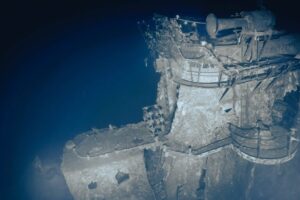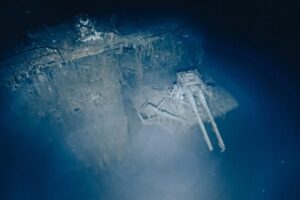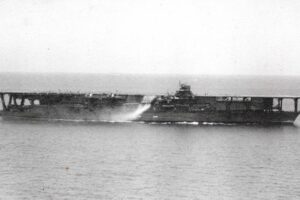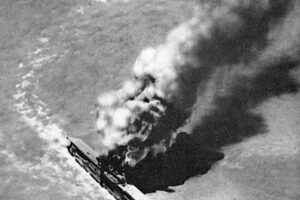New Images of Famed Carriers Lost in the Battle of Midway
Excerpt from US Naval Institute.
“During over 43 hours at depth [using remotely operated vehicles], we methodically circumnavigated these historic wrecks, bringing to light many features in great detail, including their armament, battle, and sinking-related damage,” Daniel Wagner, the trust’s chief scientist, said in a statement.
“Many antiaircraft guns were still pointing up, providing clues about the final moments on these iconic ships.”
The ROVS, launched from Exploration Vessel Nautilus, provided images for the first time of IJN Akagi and the first detailed views of Yorktown. The three wrecks – the third carrier was IJN Kaga – were explored within the Papahānaumokuākea Marine National Monument (PMNM), the largest protected area in the United States and one of the largest in the world. It is also a UNESCO World Heritage Site.
James Delgado, senior vice president for SEARCH Inc. and involved in the planning for this mission, told USNI News, ”Several of us had advanced a return to Midway as the previous work had been limited by technology as this is at the extreme limit of capacity for work at these depths (18,000 feet). Equipment failures with ROVs had limited the time spent in assessing Yorktown in 1998 and Kaga in 2019, and Akagi had been sonar mapped but not dived. We also took this opportunity to continue mapping to see if we could find the other wrecks.”
Ocean Exploration Trust used their remotely operated vehicle (ROV) Atalanta to examine the wrecks as part of the Ala ʻAumoana Kai Uli expedition.
“The surveys were as comprehensive as we could make them; detailed, slow methodical documentation of each hull, at the mudline and at higher elevations, over the flight decks, and detailed assessment where we could get in closer; we assessed battle damage, evidence of other actions (such as the crew’s fight to save USS Yorktown) as well as what happened with the sinking of each carrier,” said Delgado. “We also assessed where we could, especially with Kaga, large pieces of debris that came off the hull as the carrier fell through the water and impacted on the seabed. The 16–19 hour watches we did, without sleep, mean that going back to the videos will likely reveal additional details.”







